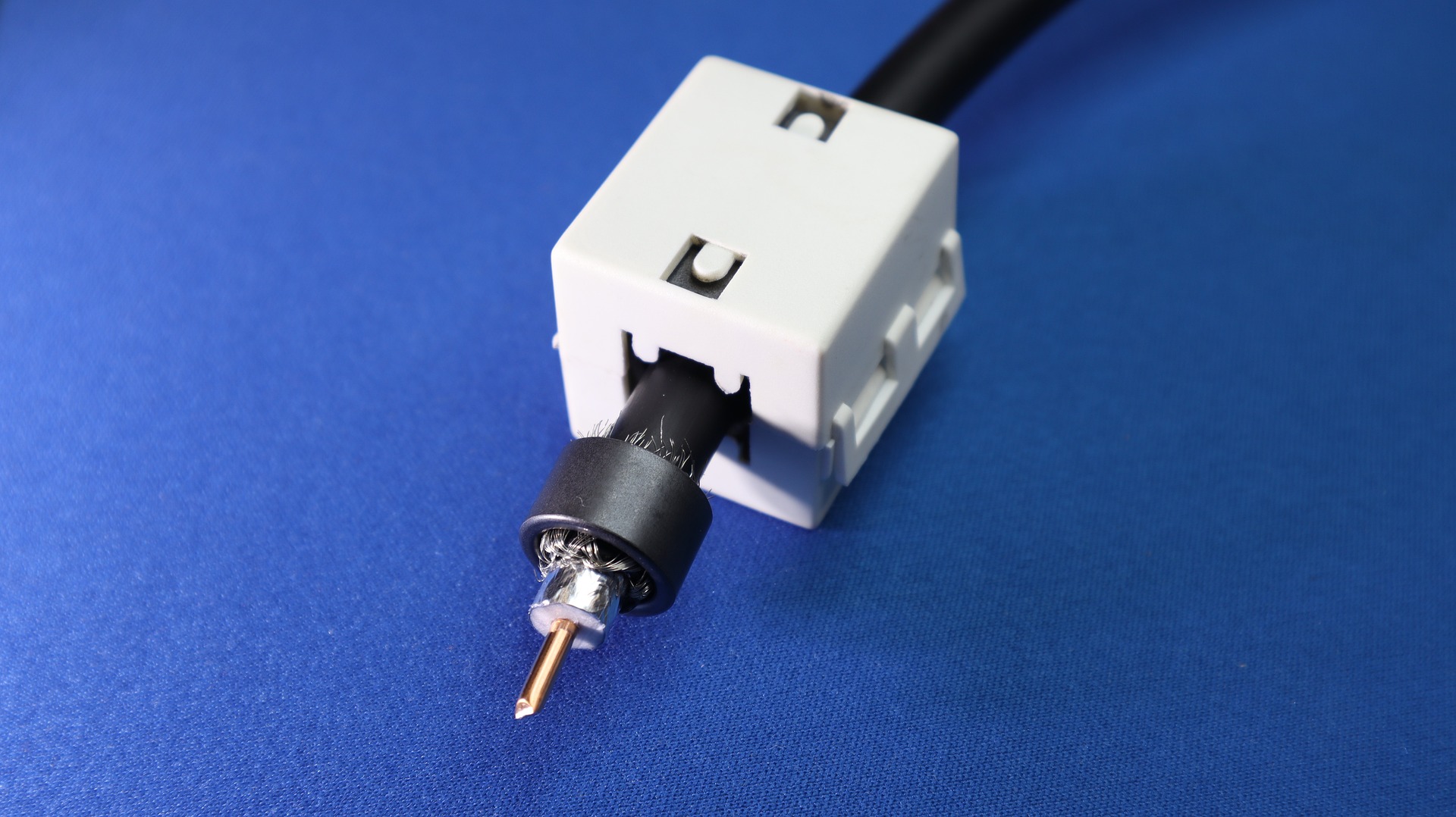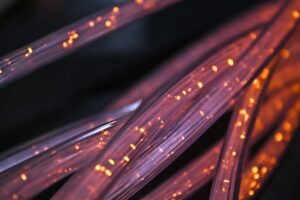Coaxial cables play a crucial role in modern communication systems, transmitting signals with efficiency and reliability. These cables are widely used in various applications, including telecommunications, broadcasting, and home entertainment. However, when it comes to coaxial cables, a common question arises: Are all coaxial cables the same?
Definition of Coaxial Cable:
A coaxial cable, often called coax, is an electrical cable consisting of an inner conductor, a concentric conducting shield, and a dielectric material separating the two. This design allows for the efficient transmission of signals while minimizing interference and signal loss. Coaxial cables are known for their ability to carry high-frequency signals over long distances.
Importance of Coaxial Cables in Transmitting Signals:
Coaxial cables are integral components of modern communication systems. They are commonly used for transmitting radio frequency (RF) signals, such as television signals, internet data, and telephone communications. The design of coaxial cables ensures that the signals remain intact and free from external interference throughout the transmission process.
Overview of the Question: Are All Coaxial Cables the Same?
While coaxial cables share a common design concept, it is important to note that not all coaxial cables are identical. Various factors differentiate coaxial cables, including their size, materials, and shielding. These variations are intended to cater to different applications and optimize the performance of the cables.
In the following sections, we will delve into the details of coaxial cables, exploring the types available, the differences in materials and shielding, and the considerations to keep in mind when selecting the appropriate coaxial cable for specific applications. By understanding these distinctions, we can make informed choices to ensure the best signal transmission and performance.
Note: The introduction sets the stage for discussing the question at hand and provides a brief overview of the importance of coaxial cables in signal transmission. The subsequent sections can further explore the different types of coaxial cables, the variations in materials and shielding, and the considerations for selecting the right cable for specific applications.
Understanding Coaxial Cables:
Coaxial cables are widely used for signal transmission in various industries, including telecommunications, television broadcasting, and networking. It is important to understand their structure and components to comprehend why not all coaxial cables are identical.
Structure and Components of Coaxial Cables:
Coaxial cables have several key components that work together to ensure efficient signal transmission.
- Inner Conductor:
The inner conductor is a central wire that carries the signal. It is typically made of copper or copper-clad steel, as these materials offer low resistance and high conductivity. The diameter of the inner conductor can vary depending on the cable type and application.
- Conducting Shield:
Surrounding the inner conductor is a conducting shield, which is a barrier between the inner conductor and the outer environment. This Shield is designed to minimize external interference and signal loss. It is usually made of braided copper, aluminum, or a combination of both. The quality and coverage of the conducting Shield can vary between different coaxial cable types.
- Dielectric:
The conducting Shield is separated from the inner conductor by a dielectric material. The dielectric acts as an insulator, preventing the inner conductor and the Shield from coming into direct contact. It also helps maintain the impedance characteristics of the cable. Common dielectric materials include foam polyethylene and solid polyethylene.
- Protective Outer Sheath:
Coaxial cables are encased in a protective outer sheath to safeguard the inner components from physical damage. This sheath is typically made of PVC (polyvinyl chloride) or PE (polyethylene) and provides mechanical strength, resistance to moisture, and durability.
Long-Standing Use of Coaxial Cables for Signal Transmission:
Coaxial cables have been utilized for signal transmission since the early 20th century. Their design allows for the efficient transmission of high-frequency signals over long distances with minimal signal degradation. This long-standing use is a testament to the reliability and effectiveness of coaxial cables in various applications.
Conclusion:
Coaxial cables comprise an inner conductor, conducting Shield, dielectric, and protective outer sheath. These components work together to transmit signals while efficiently minimizing interference and signal loss. The use of coaxial cables for signal transmission has a rich history, and their design has been optimized over time to meet the needs of diverse applications. Understanding the structure and components of coaxial cables provides a foundation for exploring the differences between various coaxial cable types and their suitability for specific applications.
Types of Coaxial Cables:
Coaxial cables come in various types, each designed to meet specific requirements and applications. Understanding the variations in coaxial cables is crucial in selecting the right cable for a particular use case.
Variations in Coaxial Cables:
Coaxial cables can vary in terms of size, materials, impedance, and performance characteristics. These variations are tailored to accommodate different frequency ranges, signal strengths, and environmental conditions.
Different Sizes and Materials Available:
Coaxial cables are available in different sizes, commonly denoted by their RG (Radio Guide) numbers. The RG number represents a series of specifications for the cable, including its diameter, impedance, and shielding characteristics. For example, RG-6 and RG-59 are commonly used for residential cable TV and satellite installations.
Coaxial cables can also differ in the materials used for their inner conductors, conducting shields, and dielectric insulators. The choice of materials affects the cable’s performance, durability, and cost. Copper is preferred for conductors due to its excellent conductivity, while the conducting Shield can be made of braided copper or aluminum.
The distinction between RG and Other Coaxial Cable Types:
The RG designation is widely used to classify coaxial cables, but other coaxial cable types are also available. These include RG-11, RG-8, and RG-58, among others. Each cable type has specific characteristics and is suitable for different applications.
Beyond the RG classification, other coaxial cable types have been developed to meet specialized requirements. Examples include triaxial cables, semi-rigid cables, and low-loss cables. These cables offer enhanced performance in terms of higher frequency capabilities, lower signal loss, and improved shielding effectiveness.
Importance of Choosing the Right Cable for Specific Applications:
Choosing the right coaxial cable ensures optimal signal transmission and performance. Factors such as frequency range, signal attenuation, and environmental considerations must be considered. An incorrect or suboptimal coaxial cable can result in signal degradation, poor signal quality, or susceptibility to interference.
Different applications require specific coaxial cable characteristics. For instance, higher-frequency applications like satellite communications may demand cables with better shielding and lower signal loss. On the other hand, residential cable TV installations may require cables with appropriate impedance and compatibility with connectors.
Conclusion:
Coaxial cables exhibit size, materials, impedance, and performance characteristics variations. The RG classification provides a general framework, but other coaxial cable types are available to meet specialized requirements. Choosing the right coaxial cable for specific applications is crucial to ensure optimal signal transmission, minimize signal loss, and mitigate interference. Factors such as frequency range, signal attenuation, and environmental conditions will help select the most suitable coaxial cable for a particular use case.
Differences in Materials and Shielding:
Coaxial cables can vary in terms of the materials used for the inner conductor and shielding, significantly impacting their performance and suitability for specific applications. Let’s explore these differences and the importance of shielding for signal integrity and protection against interference.
Materials Used for Inner Conductor and Shielding:
The inner conductor of coaxial cables is typically made of copper or copper-clad steel. Copper is an excellent conductor of electricity, offering low resistance and high conductivity. Copper-clad steel combines copper’s conductivity with steel’s strength and cost-effectiveness.
The choice of materials for the shielding can vary. Common options include braided copper, aluminum, or a combination of both. Copper is preferred for its superior conductivity and effectiveness in reducing electromagnetic interference (EMI). Aluminum is sometimes used for its cost-effectiveness, although it may have slightly lower conductivity than copper.
Impact of Material Choice on Cable Performance:
The material choice for the inner conductor and shielding can significantly impact the cable’s overall performance. Copper inner conductors offer lower resistance and minimize signal loss, leading to better signal quality and transmission over longer distances. Copper shielding provides excellent EMI shielding and helps maintain signal integrity.
While aluminum may offer cost advantages, it may have slightly higher resistance than copper. This can result in higher signal loss and reduced performance, particularly in long cable runs or high-frequency applications.
Variations in Shielding:
Coaxial cables can have variations in the type and effectiveness of shielding. Some cables may have a single shielding layer, while others offer double or quad shielding options.
Single-layer shielding usually consists of a braided conductor made of copper or aluminum. This provides a basic level of protection against external interference. However, higher levels of shielding are beneficial for applications in environments with higher interference levels or for longer cable runs.
Double or quad shielding refers to the inclusion of additional layers of shielding to enhance protection against EMI. These additional layers may include foil shields and braided shields. Double or quad shielding provides better attenuation of external interference and can improve signal quality, especially in critical applications where signal integrity is paramount.
Importance of Shielding for Signal Integrity and Protection Against Interference:
Shielding is crucial in maintaining signal integrity by protecting the inner conductor from external interference. Coaxial cables, especially those used for high-frequency applications, are susceptible to interference from nearby electronic devices, power sources, or electromagnetic fields.
Shielding prevents unwanted electromagnetic signals from entering or escaping the cable, ensuring that the desired signal remains strong and clear. It helps reduce the effects of crosstalk, noise, and signal degradation, improving overall performance.
Effective shielding is particularly important in applications such as telecommunications, broadcasting, and data transmission, where the integrity and quality of the signal are paramount.
Conclusion:
The materials used for the inner conductor and shielding, as well as the type and effectiveness of shielding, significantly impact the performance of coaxial cables. Copper is preferred for its superior conductivity and shielding effectiveness. Aluminum may be used for cost-effectiveness but may have slightly lower performance. Variations in shielding, such as double or quad shielding, provide enhanced protection against interference. Shielding is crucial for maintaining signal integrity and protecting against external electromagnetic interference, ensuring optimal application performance.
Applications and Considerations for Coaxial Cables:
Coaxial cables find diverse applications in various industries due to their efficient signal transmission capabilities. Let’s explore the common uses of coaxial cables in telecommunications, broadcasting, and home entertainment and the factors to consider when selecting the right one for a specific application.
Diverse Applications of Coaxial Cables:
Coaxial cables are utilized in a wide range of applications, including:
- Telecommunications: Telecommunications networks extensively use coaxial cables to transmit voice, data, and video signals. They are commonly used for cable TV distribution, broadband internet, and telephone systems.
- Broadcasting: Coaxial cables are crucial in broadcasting applications, including television and radio transmission. They ensure high-quality signal delivery from broadcasting stations to antennas, allowing for reliable and clear reception.
- Home Entertainment: Coaxial cables are commonly used in home entertainment setups to connect devices such as cable/satellite boxes, DVD/Blu-ray players, and gaming consoles to TVs or audio systems. They enable the transmission of audio and video signals with minimal signal loss.
Factors to Consider When Selecting Coaxial Cables:
When choosing the right coaxial cable for a specific application, several factors should be taken into consideration:
- Frequency Range: Different applications require specific frequency ranges. Selecting a coaxial cable that can handle the desired frequency range without significant signal degradation is important. Higher frequency applications like satellite communications may require cables with wider bandwidth capabilities.
- Signal Attenuation and Loss: Coaxial cables have inherent signal attenuation, meaning the signal weakens as it travels through the cable. It is essential to consider the expected cable length and the acceptable level of signal loss for the application. Cables with lower signal attenuation are preferred for long-distance or high-frequency applications.
- Environmental Considerations: The operating environment can impact the choice of coaxial cable. Factors such as temperature, moisture, and exposure to chemicals or UV radiation should be considered. Some cables are specifically designed for outdoor or harsh environments, offering enhanced durability and protection against environmental factors.
- Compatibility with Connectors and Devices: Ensure that the selected coaxial cable is compatible with the connectors and devices in the system. Consider factors such as connector type (e.g., F-type, BNC) and impedance (commonly 75 ohms for video applications and 50 ohms for data/telecommunications).
Conclusion:
Coaxial cables have diverse applications in telecommunications, broadcasting, and home entertainment. When selecting the right coaxial cable, factors such as frequency range, signal attenuation, environmental considerations, and compatibility with connectors and devices should be considered. By carefully evaluating these factors, one can choose a coaxial cable that ensures optimal signal transmission, minimizes signal loss, and meets the specific requirements of the application at hand.
In conclusion, it is evident that not all coaxial cables are the same. Coaxial cables vary in terms of size, materials, shielding, and other characteristics. Understanding these differences and selecting the appropriate coaxial cable for optimal signal transmission and performance is essential.
Throughout this article, we have explored the structure and components of coaxial cables, including the inner conductor, conducting Shield, dielectric, and protective outer sheath. We have also discussed the variations in coaxial cables, such as different sizes, materials, and the distinction between RG and other coaxial cable types.
Moreover, we have highlighted the importance of considering the specific requirements of the intended application when selecting coaxial cables. Factors such as frequency range, signal attenuation and loss, environmental considerations, and compatibility with connectors and devices should be considered.
Choosing the right coaxial cable for a specific application can ensure optimal signal transmission, minimize signal loss, and protect against interference. Whether it is in telecommunications, broadcasting, or home entertainment, selecting the appropriate coaxial cable plays a crucial role in achieving reliable and high-quality signal transmission.
Therefore, when faced with the task of selecting a coaxial cable, it is encouraged to carefully consider the specific requirements and factors discussed in this article. Doing so lets you make an informed decision and ensure that the chosen coaxial cable is well-suited for your intended application, ultimately leading to improved performance and overall satisfaction.
How to Unlock Face ID with a Picture? A Complete Guide for 2023








